Plant Adaptations To Different Environments
Here is a list of examples of plants adaptations developed in order to accommodate and survive in different environments and conditions.
The plant world is impressive. Like animals, plants have undergone various adaptations to survive in different environments over the years. These characteristics have allowed plants to survive and thrive in some of the harshest places and climates.
Further, we will present some examples of plants that have adapted very well to the environments in which they live and how they manage to grow in some of the most challenging conditions throughout the world.
Contents
1. Aerial Roots

Aerial roots are particular root types that grow above the ground and have various functions like providing support for the plant, collecting extra oxygen from the air or nutrients, or climbing on various things, such as trees or rocks.
This type of root is present in some plants to complement the functions of the root buried in the soil, while other plants rely solely on these aerial roots to collect water and nutrients from the atmosphere. From a botanical point of view, these plant types are called epiphytic plants.
A few examples of plants with aerial roots include:
- Orchids
- Monstera Deliciosa
- Mangroves
- Ficus Benghalensis
- Philodendron
If you want to learn more about these root types and more examples of plants that possess them, read our article about aerial roots.
2. Growing In Water
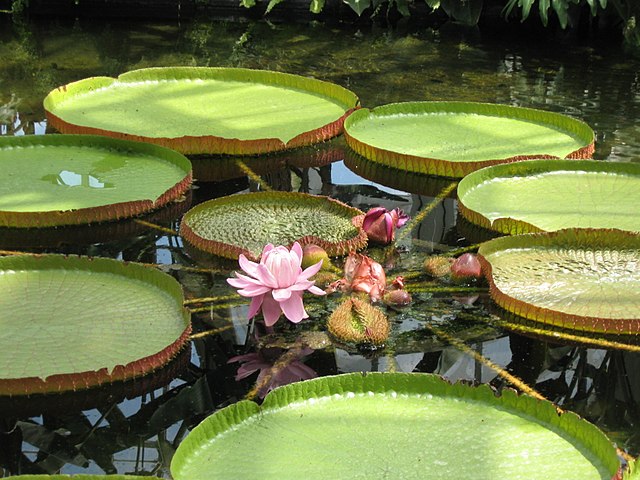
Although there is an extraordinary diversity of plants that grow on land, there are also species of plants with various adaptations to living in water or above water. These are called aquatic plants and can be found both in saltwater and freshwater.
Aquatic plants can either grow emergent (their roots grow underwater and can be rooted to the substrate or not, but the leaves and blooms grow above the water), submergent (growing entirely underwater), or floating (have roots that hang freely in the water without being attached to the soil).
A few examples of aquatic plants include:
- Amazon water lily
- Duckweed
- Lotus
- Water lily
- Soft hornwort
- The great scented liverwort
- Water lettuce
3. Trapping Insects (Carnivorous)
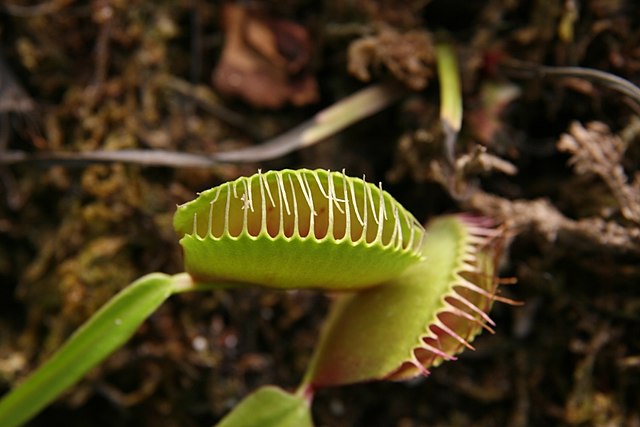
Another fascinating example of the adaptation of plants to the environment is that of carnivorous plants.
Carnivorous plants use various methods to attract and catch different insects. Larger species can even become traps for small rodents, lizards, or young frogs.
These plants usually grow in nutrient-poor soils, especially nitrogen. The shortage of this vital component for plants has led to their evolution and the need for its supplementation. Hence, carnivorous plants have developed ingenious trapping systems and mechanisms to transform their live prey into nitrogen.
Several examples of carnivorous plants include:
- Venus flytrap (Dionaea muscipula)
- Pitcher plant (several different species)
- Cobra lily (Darlingtonia californica)
- Monkey Cup (Nepenthes genus)
- Spoon-leaved sundew (Drosera spatulata)
4. Better Propagation
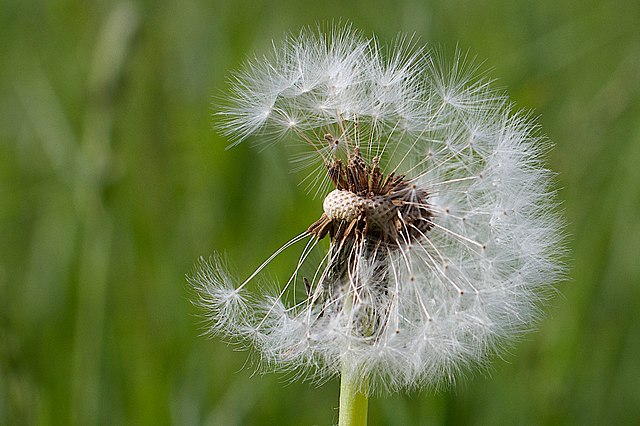
Another interesting aspect of plant evolution is the improvement of the propagation method. Thus, many plant species no longer multiply only by seeds, but also through much more efficient ways.
Combined multiplication mechanisms
One of the most effective methods of plant propagation, a feature found in many plant species considered invasive, is rhizomatic propagation.
A rhizome is an underground stem that is capable of delivering new shoots and root systems for a new plant.
When you combine rhizomes with stolons and you also add up the possibility of distribution through seeds, you obtain a plant well adapted to spreading. A good example of such a plant is Bermuda grass.
For more examples of plants with rhizomes, read this article.
Attract pollinators
To ensure their existence, plants have developed various methods to attract pollinating insects, this process being essential in fruit and seed production.
Some of the most common techniques include nectar production and emitting pleasant, or foul-smelling odors that attract insects. One of the worst-smelling flowers is Titan arum, mentioned on our list of ugly flowers.
Improved Seed Dispersal
Some plants multiply only by seeds. Hence, their existence depends entirely on the efficiency of this process.
Therefore, it became essential for plants to improve their seed dispersal mechanisms.
Wind Dispersal
The seeds of many plants, such as dandelion, have various parachute-like structures that allow them to be carried away by the wind.
Exploding Seed Pods
Another more impressive way for plants to scatter their seeds is through exploding seed pods.
This process is also known as ballistic seed dispersal (or ballochory) and consists of the plant discharging the seeds with a significant force, comparable to the one of a small explosion.
No explosive is involved in the process but only the force that results from the pressure that forms within the fruit cells when it dehydrates.
An impressive example of a plant with an explosive seed dispersal mechanism is the one of Hura Crepitans, also known as the Sandbox tree. These trees produce pumpkin-shaped fruits that once they are ripe will blast, throwing parts and the seeds inside to great distances from the trunk.
For a list of several plants with ballistic seed dispersal mechanisms, see this article.
5. Growing On Other Plants (Parasitic)
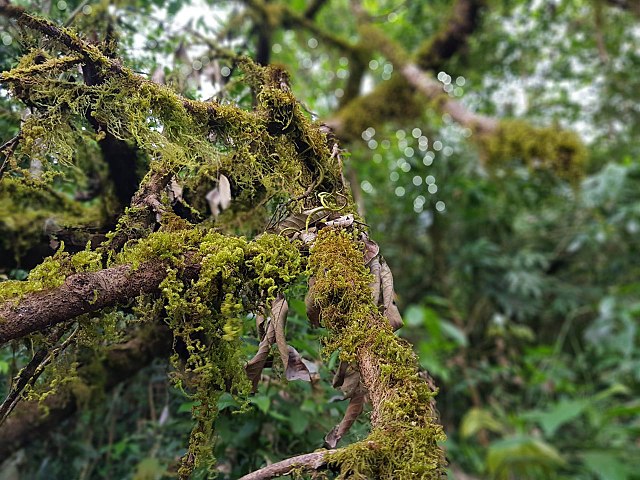
Just like animals and fungi, plants can also be parasitic.
A parasitic plant grows on top of a host plant and gets all or a part of its food from the host, without offering any benefits in exchange. In most cases, the parasitic plant will lead to the death of the host by depriving it of nutrients.
The parasitic plants posses modified roots that penetrate the host plant and steal its nutrients and water.
There are two main types of parasitic plants. The first cannot complete their life cycle without a host (obligate parasite plants), and the second can reach the end of their life cycle independent of a host (facultative parasite plants).
Several examples of parasitic plants include:
- Mistletoes
- Corpse flower (Rafflesia arnoldii)
- Broomrape (Orobanche ramosa)
- Yellow rattle (Rhinanthus minor)
- Fiveangled dodder (Cuscuta pentagona)
6. Developing Defense Mechanisms

Another characteristic of plants that has allowed them to adapt to various environments is their defense system.
Without any defense, many plants and their fruits would be an easy meal for insects and animals. Thus, they developed various ways to keep predators away.
One of the most common defense systems in plants is the presence of thorns or spines on stems, leaves, or trunks in the case of some species of trees.
Another way to protect itself from herbivores is by secreting potent toxins found in some or all parts of the plant.
Other plants, such as Mimosa pudica (also known as the sensitive plant), have developed a more ingenious defense mechanism. When touched, these plants close their leaves, making them seem wilted and unappetizing for animals.
7. Growing With Little Water
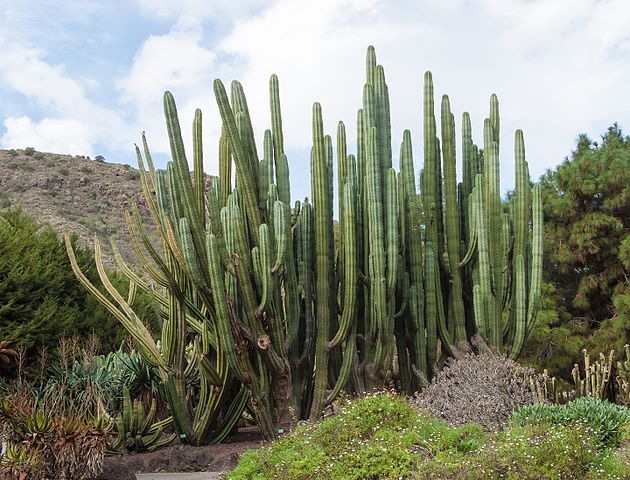
Another adaptability to the environment is the example of the plants growing in deserts.
Desertic areas are found in many regions of the world and are the driest of all the biomes.
Some characteristics that make the desert a very harsh environment for plants include:
Deserts receive very little rainfall.
According to The Earth Observatory by NASA, most deserts receive less than 300 mm a year compared to rainforests, which receive over 2,000 mm.
There is a big variation in temperature between day and night
Another thing that makes desert life very hard for plants is the great variation of temperature between day and night.
The daytime temperature averages 38°C while in some deserts it can get down to -4°C at night. (source: The Earth Observatory)
The soil is infertile
The soil is mostly infertile (90–95% being sandy soil) with a low content of nitrogen and organic matter and very high calcium carbonate and phosphate. (source)
To survive in these difficult circumstances, the plants had to adapt.
There are not many plants that can survive in these conditions. In general, desert vegetation consists largely of numerous species of cacti, small bushes, short grasses, and some tree species.
Desert plants usually have long shallow roots to tap groundwater. Succulent plants usually have fleshy stems and leaves to store water, waxy skin to reflect heat, and thorns to drive away animals, perform photosynthesis and reflect light.
Another adaptability of desertic plants is the ability to go dormant during periods of not enough rainfall. They do not perform photosynthesis during inactivity and do not grow or reproduce. (source)
Final Word
Plants are fascinating not only through their variety and their essential role for our world but also for their adaptability to various environments.
Over time, plants have developed new characteristics or have improved the existing ones in order to adapt to the conditions of different regions and climates.
We hope you found this article interesting and has helped you get a clearer picture of how plants manage to survive even in the harshest circumstances.

